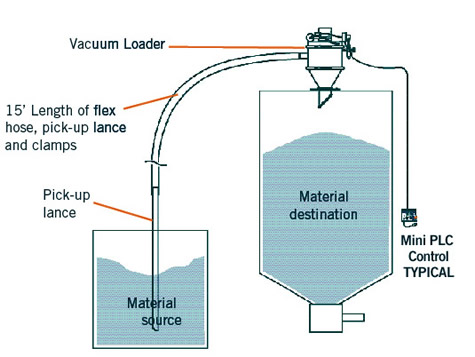How a Self-Contained Loader Works
Self-contained loaders are the most common material loading system in use. They are typically found in smaller processing plants but also in plants with sophisticated central systems. There are often situations where the processor needs to transfer material from a Gaylord to a drying hopper or other destination.
The self-contained loader is usually supplied with a simple controller a pickup wand, a length of flexible hose and a couple of hose clamps. The loader is mounted on top of the destination container, which may be a surge bin or, more likely, a drying hopper. The wand is inserted into the resin source, the controller is programmed with the length of loading time and dump time and the loader is turned on. The powerful little self-contained motor creates enough vacuum to move material about 15 feet. A valve on the pickup wand can control the material flow.
Most small processors use this inexpensive, compact device to keep workers from climbing ladders with buckets full of resin – a labor-intensive and unsafe way of loading.




